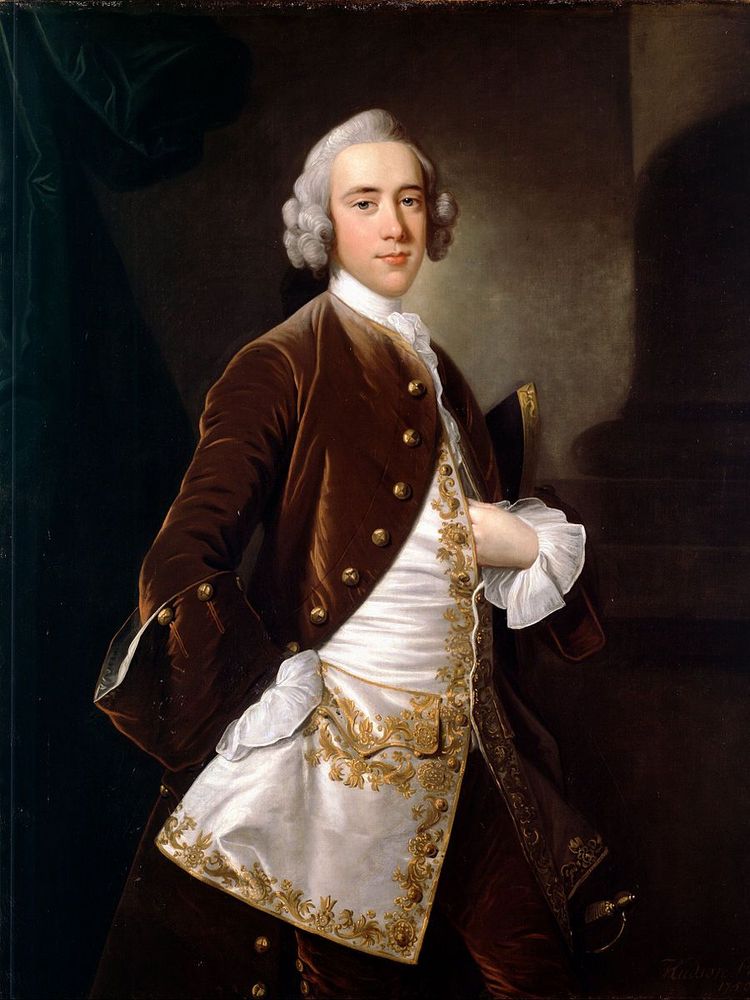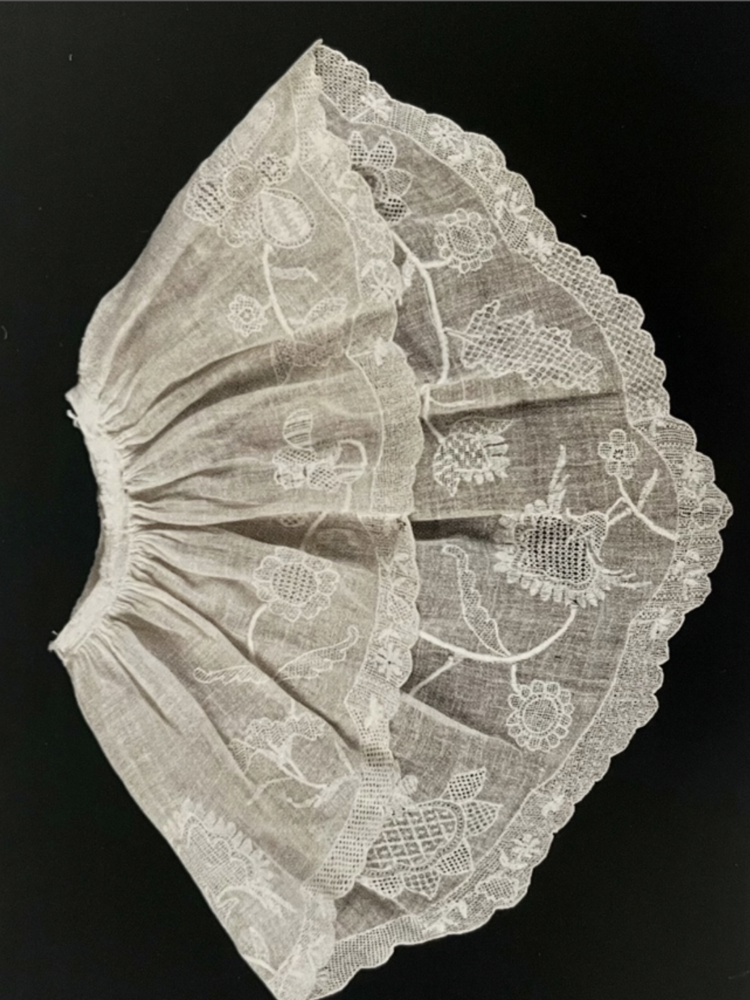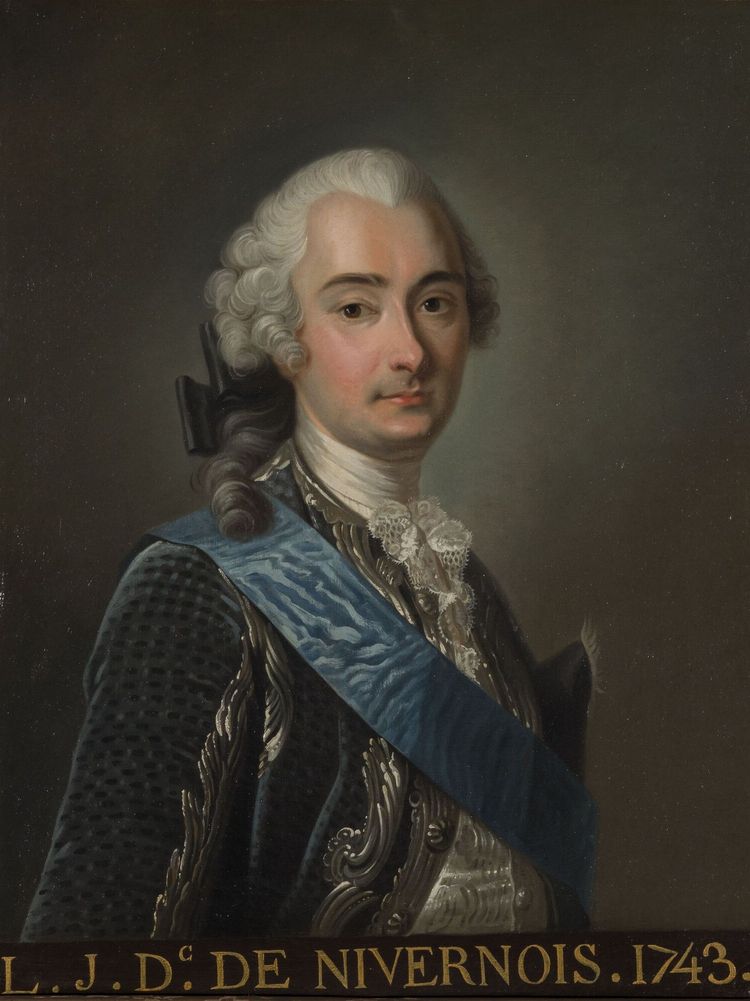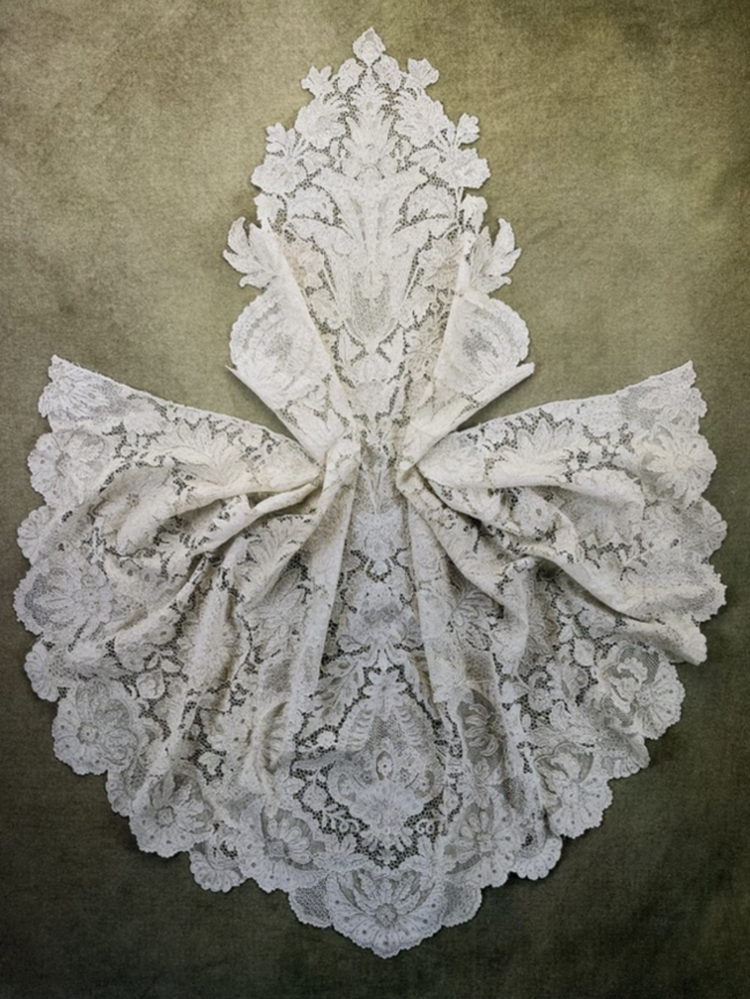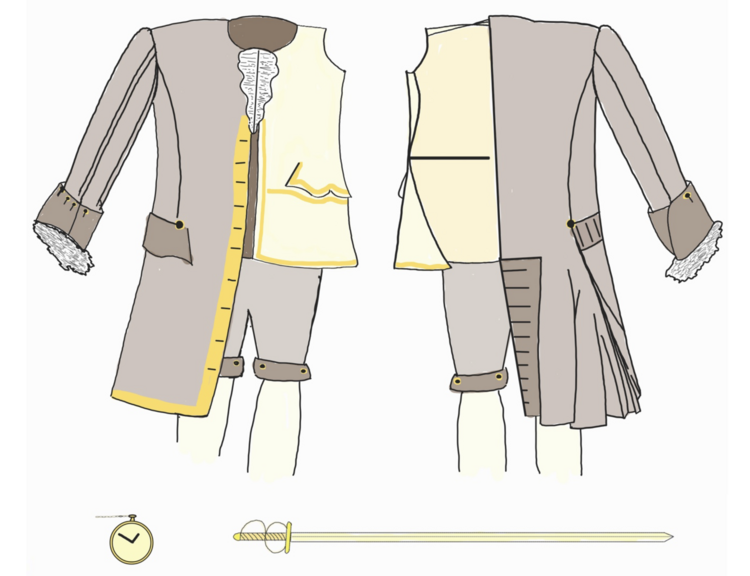Jeune Cornelis
Portrait of a Man, 1750, by Thomas Hudson, Dulwich Picture Gallary: DPG 579.
Cotton sleeve ruffle,1730s, V&A South Kensington: T.140&A-1959.
Louis-Jules-Barbon Mancini-Mazarin, duc de Nivernais, 1752-1795, by Louis d'après Vigée, Chateau de Versailles: MV 2983.
Jabot/Stomacher. Needle "Point de France", c. 1735, Paris, private collection, in: Kraatz, Anne: Lace. History and Fashion, London 1989, S. 78.
Read an article about Justin Schröder's work in the Nord-West-Zeitung (NWZ)
Was anziehen am Königshof? – Oldenburger Student schaut in die Geschichte
Jeune Cornelis
About the captured garments of a count in the eighteenth century
Imagine that you are invited to an important celebratory event, an exhibition opening or a event with a hand-picked audience. But what do you wear? Even today you would be expected to wear something appropriately elegant. After much deliberation you find the perfect outfit. But how do you feel if you cannot find the carefully chosen garments you ordered just before the event? Presumably similar to how Count Josef Xaver von Haslang, Privy Counsellor and member of the Order of St. George, must have felt when he learnt that he would not receive his garments, which had been ordered on the occasion of King George II's birthday party. The reason for the count being deprived of his garments is to be found in the capture of the ship "The Jeune Cornelis" on 8 October 1745, as the ship was transporting his special order from continental Europe to London. The sources - used for the very first time for this paper - show that the clothes were confiscated by the English crown, which must have troubled Count Haslang even more, given the fact that he was serving as a diplomat for the Electorate of Bavaria at the British royal court. Now began a race against the clock: the diplomat had less than three weeks to procure the clothing especially ordered for His Magesty's Day from a warehouse owned by the English Crown.
But why did the English Crown confiscate a diplomat’s clothing? The explanation can be found in the logistics of delivery. Count Haslang commissioned a merchant friend to buy certain items of garments in France. His friend bought the items ordered on site and set off by sea towards Rotterdam. On the way from France to Rotterdam, the ship encountered the English privateer Charlisle, which captured the supposedly hostile French ship as prize. This capture, which was extremely unfortunate for Count Haslang, turns out to be a great stroke of luck for researchers today. The court documents on the individual captures housed today in The National Archives in London allow a glimpse into the festive wardrobe of a noble count. Yet why focus on the Count’s wardrobe? Garments serve as a non-verbal medium of communication and at the same time as status symbols. They can also be an expression of prevailing social norms and conventions. This demonstrates the possibilities that research into materiality and garments can open up to historians. If you look at the documents and lists of confiscated garments and accessories of the count, it quickly becomes clear why he specifically insisted on the clothes he had ordered. His clothing consisted of fine silk stockings (forty-eight pieces in total!), a justaucorps (cloak), a jabot made of silver lace and other items. In addition to the items of garments mentioned in the inventory lists for the court, conclusions about his garments can also be drawn from archived personal documents of the count. For example, the Count's written
language and omnipresent titles indicate the position he held in society. This in turn influenced the sartorial and material aspects of his clothing. Sources can be found that refer to the use of diamonds and jewels as buttons by diplomats in the eighteenth century. Other accessories such as a pocket watch or a sword were worn to underline status. These items were considered indispensable status symbols at the time. All in all this shows again how much can be learned from everyday objects, such as a stolen wardrobe. The research on Graf Haslang’s clothes are possible because of these unique sources held at the TNA in London, demonstrating the importance of the Prize Papers Project.
Discover HCA 32/119/5: Captured goods seized from the Jeune Cornelis in TNA Discovery
Browse the documents in the Prize Papers Portal
Sketch oriented on: North, Susan: 18th-Century Fashion in Detail, London 2018, pp. 18, 20, 73.

Justin Schröder is master’s student of History and German Studies at the University of Oldenburg and a research student assistant with the Prize Papers Project’s team in Oldenburg. This case study is based on his Bachelor's thesis.
Contact: justin.schroeder@uni-oldenburg.de


